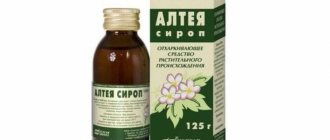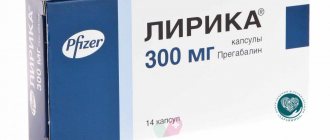Home | About us | Delivery | Advertisers | Login | Registration
- Medicines
- dietary supplementsVitamins
- Categories from A to Z
- Brands from A to Z
- Products from A to Z
- Medical equipment
- beauty
- Child
- Care
- Honey products appointments
- Herbs and herbal teas
- Medical nutrition
- Journey
- Making medicinesStock
Pharmacy online is the best pharmacy in Almaty, delivering medicines to Almaty. An online pharmacy or online pharmacy provides the following types of services: delivery of medicines, medicines to your home. Online pharmacy Almaty or online pharmacy Almaty delivers medicines to your home, as well as home delivery of medicines in Almaty.
my basket
Apteka84.kz is an online pharmacy that offers its customers medicines, medicinal and decorative cosmetics, dietary supplements, vitamins, baby food, intimate products for adults, medical equipment and thousands of other medical and cosmetic products at low prices. All data presented on the Apteka84.kz website is for informational purposes only and is not a substitute for professional medical care. Apteka84.kz strongly recommends that you carefully read the instructions for use contained in each package of medicines and other products. If you currently have any symptoms of the disease, you should seek help from a doctor. You should always tell your doctor or pharmacist about all the medicines you take. If you feel you need further help, please consult your local pharmacist or contact our GP online or by telephone.
© 2021 Pharmacy 84.
Indications
- Infectious diseases of viral etiology in patients with normal and reduced immune status: influenza, parainfluenza, acute respiratory viral infections, bronchitis of viral etiology, rhinovirus and adenoviral infections; mumps, measles (severe or complicated);
- diseases caused by herpes simplex viruses Herpes simplex type I or Herpes simplex type II (herpes of the lips, facial skin, oral mucosa, hand skin, ophthalmic herpes), subacute sclerosing panencephalitis, genital herpes; Varicella zoster virus (chickenpox and herpes zoster, including recurrent in patients with immunodeficiency); Epstein-Barr virus (infectious mononucleosis); cytomegalovirus; human papillomavirus; acute and chronic viral hepatitis B;
- chronic recurrent infections of the respiratory tract and genitourinary system in patients with weakened immune systems (including chlamydia and other diseases caused by intracellular pathogens).
Adverse reactions
The drug is generally well tolerated even with long-term use. The most common adverse reaction is an increase in the concentration of uric acid in the blood serum and urine (caused by the metabolism of inosine), which normalizes a few days after stopping the drug.
Other adverse reactions reported during clinical studies with inosine pranobex for 3 months or longer and in the post-marketing period are classified as common (>1% of cases), rare (<1% of cases) and rare (<0.01). %).
Frequent (> 1%):
from the nervous system: headache, dizziness, increased fatigue, poor health;
from the gastrointestinal tract: nausea with or without vomiting, pain in the epigastric region;
from the skin and subcutaneous tissue: itching, skin rashes;
from the liver and biliary tract: increased levels of transaminases, alkaline phosphatase or urea nitrogen in the blood;
Musculoskeletal and connective tissue disorders: joint pain.
Rare (<1%):
from the nervous system: nervousness, drowsiness or insomnia;
from the gastrointestinal tract: diarrhea, constipation;
side of the kidneys and urinary tract: polyuria (increased urine volume).
Rare (<0.01%):
from the skin and subcutaneous tissue: urticaria;
from the immune system: hypersensitivity reactions (including angioedema);
from the gastrointestinal tract: lack of appetite.
Features of application
It should be remembered that Groprinosin, like other antiviral drugs, is most effective for acute viral infections if treatment is started at an early stage of the disease (preferably on the first day). The drug is used both for monotherapy and in complex treatment with antibiotics and other etiotropic drugs .
The active substance of the drug is metabolized to uric acid and can cause a significant increase in its concentration in the urine (up to 8 mg/dL, corresponding to 420 µmol/L), especially in men and in elderly patients of both sexes. In this regard, Groprinosin is used with caution in patients with gout and a history of hyperuricemia, urolithiasis and renal failure. If it is necessary to use the drug in these patients, it is necessary to carefully monitor the concentration of uric acid. For long-term use (3 months or longer), it is advisable to monthly monitor the concentration of uric acid in serum and urine, liver function, peripheral blood composition and parameters of renal function.
Elderly patients
There is no need to change the dose; the drug is used in a dose for adults. Elderly people are more likely than middle-aged people to experience increased levels of uric acid in serum and urine.
Important information about the excipients of the drug.
Groprinosin syrup contains methyl parahydroxybenzoate and propyl parahydroxybenzoate, which can cause allergic reactions (including delayed ones).
Groprinosin, syrup contains sucrose. Patients with rare hereditary disorders such as fructose intolerance, glucose-galactose malabsorption or sucrase-isomaltase deficiency should not use this drug.
1 ml of Groprinosin syrup contains 650 mg of sucrose. This should be taken into account by patients with diabetes.
Groprinosin, syrup containing about 2.5 percent ethyl alcohol by volume (20 mg ethanol 96 vol.% in 1 ml syrup), that is, up to 1600 mg ethanol in the maximum daily dose (80 ml) for adult patients, which is equivalent to 40 ml beer , about 17 ml of wine.
Interaction
The drug should not be taken simultaneously with immunosuppressants. Caution should be used when prescribing the drug with xanthine oxidase inhibitors or agents that promote the excretion of uric acid, including diuretics, with thiazide diuretics (such as hydrochlorothiazide, chlorthalidone, indapamide) or loop diuretics (such as furosemide, torsemide, ethacrynic acid).
Inosine pranobex should not be used during therapy with immunosuppressants, since the simultaneous use of immunosuppressants may affect its expected therapeutic effect due to the characteristics of pharmacokinetic mechanisms (use is possible only after completion of therapy).
When used simultaneously with azidothymidine, the formation of the nucleotide increases due to an increase in the bioavailability of azidothymidine in the blood plasma and an increase in intracellular phosphorylation in human blood monocytes.
Pharmacological properties
Pharmacodynamics.
Inosine pranobex consists of two components: inosine - the active component, which is a metabolite of purine, and a salt of 4-acetamidobenzoic acid with N, N-dimethylamino-2-propanol - an auxiliary component that increases the availability of inosine for lymphocytes. The active and auxiliary components are in a molar ratio of 1: 3.
The active substance inosine pranobex has a direct antiviral and immunomodulatory effect. The direct antiviral effect is due to binding to the ribosomes of virus-affected cells, slows down the synthesis of viral messenger RNA (mRNK) and leads to inhibition of the replication of RNA and DNA genomic viruses; the indirect effect is explained by the induction of interferon formation.
In renowned in vivo
It was revealed that inosine pranobex activates reduced synthesis of messenger RNA (mRNK) of lymphocyte proteins and the efficiency of the translation process with simultaneous inhibition of viral RNA synthesis in the following mechanisms: inclusion of inosine-bound orotic acid in polyribosomes, inhibition of the addition of polyadenylic acid to viral messenger RNA (mRNK) and restructuring of lymphocytic intramembrane plasma particles (IMP), which almost triples their density.
The immunomodulatory effect is due to the influence on T-lymphocytes (activation of cytokine synthesis) and an increase in the phagocytic activity of macrophages. Inosine pranobex enhances the differentiation of pre-T lymphocytes, stimulates mitogen-induced proliferation of T and B lymphocytes, increases the functional activity of T lymphocytes, including their ability to form lymphokines, normalizes the ratio between the main regulatory subpopulations CD4 + / CD8 + and promotes normalization of the formation of memory T cells.
Inosine pranobex significantly enhances the production of interleukin-2 (IL-2) by lymphocytes and promotes the expression of receptors for this interleukin on lymphoid cells; also stimulates the activity of natural killer cells (NK cells); stimulates the activity of macrophages for phagocytosis, processing and presentation of antigen, helps to increase the number of cells producing antibodies from the first days of treatment. Inosine pranobex also regulates the mechanisms of cytotoxicity of T lymphocytes and NK cells.
Inosine pranobex stimulates interleukin-1 (IL-1) synthesis, microbicidal activity, membrane receptor expression, and the ability to respond to lymphokines and chemotactic factors.
In renowned in vivo
There was a significant increase in the production of endogenous interferon gamma (IFN-γ) and a decrease in the production of interleukin-4 (IL-4).
With herpetic infection, the formation of specific antiherpetic antibodies is significantly accelerated, clinical manifestations and the frequency of relapses are reduced.
Inosine pranobex prevents post-viral weakening of cellular synthesis of RNA and protein in infected cells, which is especially important for cells involved in the body’s immune defense processes. As a result of this complex action, the viral load on the body is reduced, the activity of the immune system is normalized, and the synthesis of its own interferons is significantly activated, which contributes to resistance to infectious diseases and rapid localization of the source of infection if it occurs.
Pharmacokinetics.
Each part of the active substance has separate pharmacological properties.
Suction After oral administration, inosine pranobex is rapidly and completely absorbed (≥ 90%) from the gastrointestinal tract and appears in the blood. In addition, 94-
100% of the intravenous values of the components DIP [N,N-dimethylamino-2-propanol] and PABA [p-acetamidobenzoic acid] are recovered in urine after oral administration in animals.
Distribution. After administering the drug to animals, the labeled molecules of the substance appear in the following organs in descending order of specific activity: kidneys, lungs, liver, heart, spleen, testicles, pancreas, brain and skeletal muscles.
Metabolism. In humans, after oral administration of 1 g of inosine pranobex, the following concentrations of DIP and PABA in plasma were detected, respectively: 3.7 μg/ml (2:00) and 9.4 μg/ml (1 hour). In human tolerability studies, the maximum increase in uric acid concentration after dosing, as an indicator of the inosine content of the drug, is not linear and may vary by ± 10% between 1 and 3 hours.
Excretion. The 24-hour excretion of PABA and its main metabolite under steady-state conditions when administered 4 g of the drug per day was about 85% of the administered dose. 95% of the radioactivity of DIP derivatives in urine was recovered in unchanged DIP and DIP-N-oxide. The half-life of DIP is 3.5 hours, PABA is 50 minutes. The main metabolites in the human body are N-oxide for DIP and o acyl glucuronide for PABA. Due to the fact that the inosine moiety is destroyed as part of purine metabolism to form uric acid, experiments with labeled molecules in humans are impossible. In animals
70% of the administered inosine is recovered as uric acid in the urine after oral administration of the tablet form, and the remainder is recovered as normal metabolites, xanthine and hypoxanthine.
Bioavailability/area under the concentration-time curve (AUC). The recovery of PABA and its metabolite in urine under steady-state conditions was ≥ 90% of the expected value. Recovery of DIP and its metabolite was ≥ 76%. Plasma AUC was ≥88% for DIP and ≥77% for PABA.
No accumulation was detected in the body. Complete elimination of metabolites after 48 hours.



